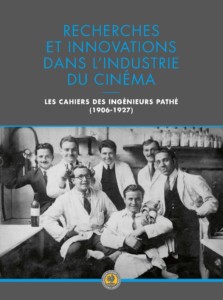Recherches et innovations dans l’industrie du cinéma: les cahiers des ingénieurs Pathé (1906-1927)
Edited by Jacques Malthête and Stéphanie Salmon
With contributions by Benjamin Alimi, Camille Blot-Wellens, Saïd Chaouni, Iris Deniozou, Clair Dupré la Tour, François Ede, Rodolphe Gahéry, André Gaudreault, Anne Gourdet-Marès, Frank Kessler, Laurent Le Forestier, Nicolas Le Guern, Sabine Lenk, Jacques Malthête, Jean-Pierre Martel, Ulrich Ruedel, Céline Ruivo, Stéphanie Salmon and Joshua Yumibe
The discovery of 138 notebooks and one manufacturing book collecting the Pathé Society research reports from 1906 to 1927 constitutes a major contribution to the history of film technology. This “treasure” bring us back to the origins of cinema, the history of its developement and its first concerns. Pathé was then the largest film company in the world. To sustain its market demand and undermine its competitors, everything needed to be created. They imagined what a film should be, tested the sensitivity of the filmstrip, worked out images in colour and 3-D, studied the sound possibilities, solved the film production challenges, and, in order to tell stories, developed editing and intertitles… Before 1925, all these avenues had been explored, tested and mostly applied, thanks to young engineers from high schools. Early cinema industry fully benefitted from their energy and thoroughness.
The research notebooks are an invaluable archive resource and a fundamental tool for film history. From the manufacturies to the laboratories, all components – technical, chemical, physical, human – are considered. Early cinema connects the laboratory with the studio, the manufactury with the screen.



